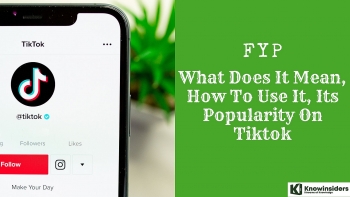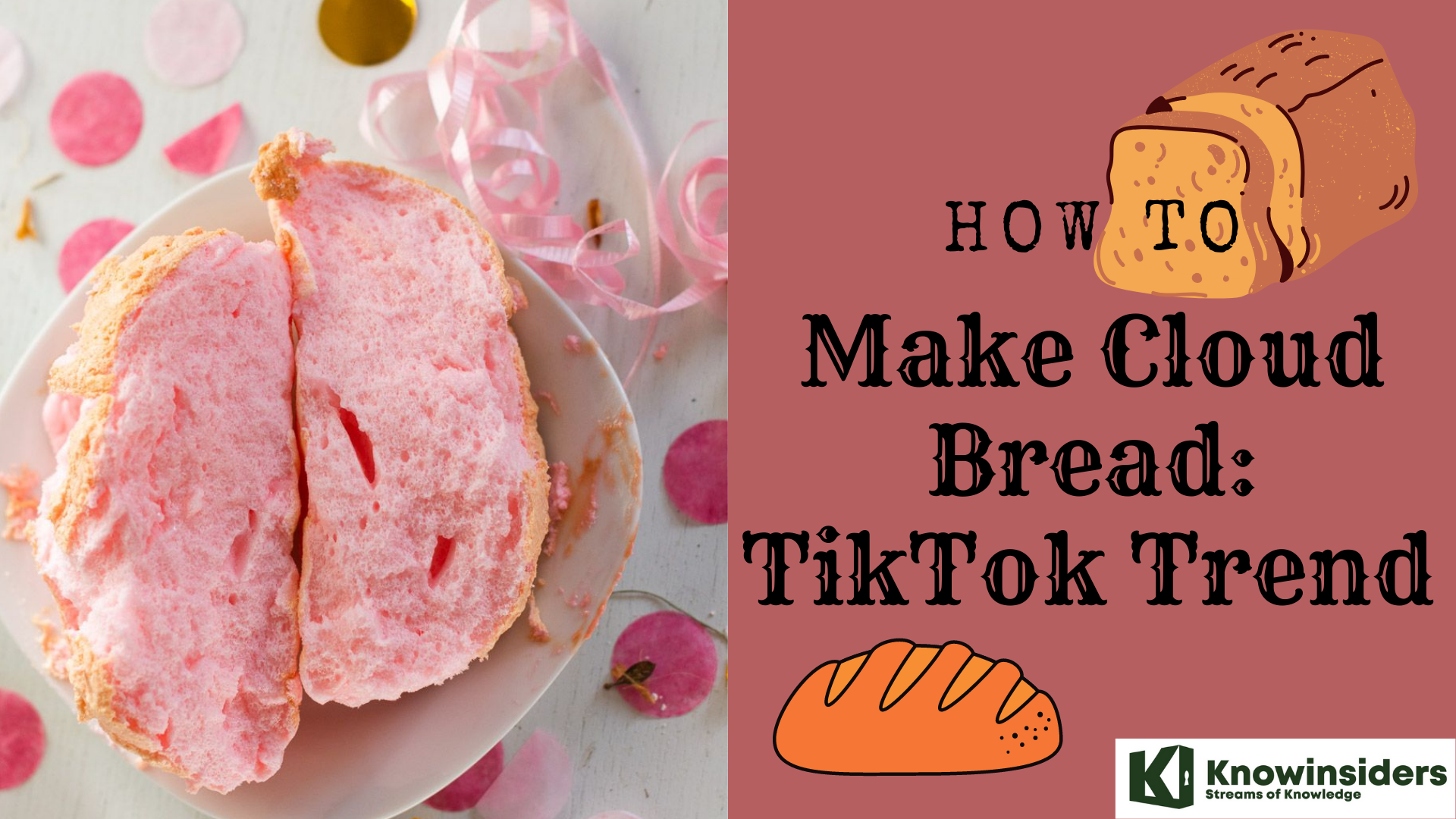“Pink Tote Lid Moments”: How a TikTok Trend Sparked Global Conversations About Family Dynamics
 Top 8 Richest Tiktok Stars in 2024 Top 8 Richest Tiktok Stars in 2024 |
 How to Find Out Who Watched Your TikTok Videos in a Few Easy Steps How to Find Out Who Watched Your TikTok Videos in a Few Easy Steps |
TikTok, the social media phenomenon, has become more than a platform for trends—it is a stage for cultural commentary and emotional reflection. From viral dance routines to deeply personal confessions, TikTok captures the diversity of human experience in short, engaging clips. One recent trend, 'Pink Tote Lid Moments,' exemplifies the platform's ability to transform specific, seemingly trivial events into global discussions about universal themes.
At its core, the 'Pink Tote Lid Moments' trend involves users sharing stories about minor family conflicts that spiral out of proportion. Sparked by a now-deleted video recounting a misunderstanding about a pink storage lid, the trend has resonated with millions of viewers. While humorous on the surface, these moments reveal the complexities of family communication and the emotional impact of seemingly insignificant disputes.
 |
| From Laughter to Reflection: What the 'Pink Tote Lid' Trend Teaches Us About Parenting |
What Are 'Pink Tote Lid Moments'?
The phrase 'Pink Tote Lid Moments' originated from a TikTok video posted by user Jaycie. In her now-viral clip, Jaycie described an interaction with her mother, who demanded she move “pink things” into her room. When Jaycie sought clarification, the request escalated into a heated argument, with both parents joining in to scold her. As it turned out, the “pink things” referred to the lid of a plastic storage tote—an object that, by itself, seemed trivial.
This specific, almost absurd story struck a chord with viewers, who found parallels in their own family experiences. The hashtag #PinkToteLid quickly gained traction as users shared their own anecdotes of familial misunderstandings and conflicts. These moments often centered around vague instructions, misplaced objects, or minor infractions that led to disproportionate emotional reactions.
What makes these stories compelling is their blend of humor and poignancy. While the interactions are often framed comically, they reveal deeper emotional patterns, such as miscommunication, displaced frustration, and unresolved tension within families. The trend has thus evolved from lighthearted storytelling into a broader cultural phenomenon, shedding light on shared experiences of growing up in emotionally charged households.
Why 'Pink Tote Lid'? The Symbolism Behind the Trend
The specificity of the phrase 'Pink Tote Lid' gives the trend its unique identity. While it originates from a single incident, the term has taken on a symbolic meaning, representing the minor conflicts that often conceal larger emotional undercurrents in family life.
In the original story, the conflict was not truly about the pink lid—it was a manifestation of deeper frustrations and communication breakdowns. Psychologists describe such moments as emotional "flashpoints," where unspoken grievances surface in response to seemingly trivial triggers. The 'Pink Tote Lid' encapsulates this phenomenon, serving as a metaphor for the hidden complexities of everyday family interactions.
TikTok users have embraced this metaphor, sharing their own “pink tote lid” moments that highlight how small misunderstandings can reflect broader family dynamics. For example:
- One user recounted an argument with their parent over the placement of a dish sponge.
- Another described a conflict about which light switch controlled the ceiling fan.
These anecdotes resonate because they are both specific and universal, capturing the emotional intricacies of familial relationships in ways that words alone often cannot.
The Psychology Behind 'Pink Tote Lid Moments'
The trend has drawn attention to the psychological patterns underlying family dynamics. By examining the factors that contribute to these conflicts, we gain a deeper understanding of why they resonate so widely.
1. Miscommunication in Families
Many 'Pink Tote Lid Moments' stem from miscommunication. Parents may assume their children understand implicit expectations, while children struggle to interpret vague or incomplete instructions. This disconnect often leads to frustration on both sides, exacerbating minor issues into full-blown arguments.
Family relationships are uniquely prone to these misunderstandings due to long-standing dynamics. Parents, shaped by their own upbringing, may default to communication patterns that feel normal to them but are unclear or overwhelming to their children.
2. Displaced Frustration
Another key psychological factor is displaced frustration. Parents, burdened by external stressors, may channel their emotions into conflicts with their children. A forgotten chore or misplaced object becomes a lightning rod for pent-up anger or anxiety. For children, these moments can feel disproportionate and bewildering, leaving lasting emotional impressions.
3. Long-Term Emotional Impact
Over time, repeated exposure to such moments can affect a child’s emotional well-being. Feelings of inadequacy, anxiety, or resentment may develop, shaping how individuals perceive themselves and their relationships. The 'Pink Tote Lid Moments' trend has opened a space for participants to reflect on these experiences and their long-term impact.
4. Humor as a Coping Mechanism
The comedic framing of these stories plays a crucial role in their appeal. Humor allows participants to process painful memories in a way that feels less overwhelming. It also fosters connection, turning personal struggles into shared moments of laughter and understanding.
Digital Solidarity and TikTok’s Role
TikTok’s unique format has been instrumental in amplifying the 'Pink Tote Lid Moments' trend. The platform’s algorithm promotes content that resonates on an emotional level, allowing these stories to reach millions of viewers. In doing so, TikTok has created a digital space where users can connect over shared experiences.
1. Shared Vulnerability
The trend exemplifies how TikTok encourages vulnerability. By sharing their stories, users foster a sense of community and solidarity, showing others that they are not alone in their struggles. The comment sections of these videos often become spaces for mutual support and validation.
2. Storytelling as Therapy
Many participants use the trend as a form of emotional processing. By reframing painful experiences as humorous anecdotes, they regain a sense of agency over their narratives. This therapeutic aspect has made the trend both cathartic and empowering for those involved.
Criticisms and Debates Surrounding the Trend
Despite its popularity, the 'Pink Tote Lid Moments' trend has not been without controversy. Critics have raised concerns about the ethics and implications of sharing personal family stories on a public platform.
1. Oversharing
Some argue that airing private conflicts online risks damaging familial relationships. Parents or siblings who see these videos may feel betrayed or misrepresented, leading to further tension.
2. Trivialization of Serious Issues
Others worry that the trend trivializes deeper emotional wounds. By framing these moments as comedic, participants may inadvertently diminish the significance of the underlying issues they reveal.
3. Generational Divides
The trend has also highlighted generational differences in how emotional expression is perceived. Older generations may view public discussions of family conflicts as disrespectful, while younger participants see them as opportunities for reflection and growth.
Lessons for Parenting and Communication
The 'Pink Tote Lid Moments' trend offers valuable lessons for improving family communication and emotional health.
1. The Importance of Clear Communication
Parents can learn from the trend by recognizing the value of clear, specific communication. Providing context and avoiding assumptions can prevent misunderstandings and reduce unnecessary conflicts.
2. Addressing Root Causes of Frustration
Families can benefit from addressing the root causes of displaced frustration. By fostering open dialogue about stressors and emotions, parents and children can build stronger, more empathetic relationships.
3. Embracing Humor and Reflection
Humor, when used constructively, can be a powerful tool for diffusing tension and fostering connection. Sharing and reflecting on these moments can help families grow closer and learn from past mistakes.
Conclusion
The 'Pink Tote Lid Moments' trend on TikTok is more than a fleeting phenomenon—it is a testament to the power of storytelling, humor, and collective reflection. By turning personal experiences into shared conversations, TikTok users have shed light on the complexities of family dynamics and the emotional weight of everyday interactions.
As the trend continues to evolve, it serves as a reminder of the importance of empathy, communication, and self-awareness in our relationships. Whether viewed as entertainment or emotional catharsis, 'Pink Tote Lid Moments' highlight the universal nature of family struggles and the enduring human need for connection and understanding.
FAQs
1. What exactly is a 'Pink Tote Lid Moment'?
A 'Pink Tote Lid Moment' refers to a specific type of family interaction where minor misunderstandings or trivial issues escalate into disproportionate conflicts. The term originates from a TikTok video recounting an argument about a pink plastic storage lid, which resonated with audiences as a relatable example of everyday family dynamics.
2. Why did this trend become so popular on TikTok?
The trend’s popularity lies in its blend of humor and emotional resonance. It captures the universal experience of family miscommunication while allowing participants to process these moments through storytelling and laughter. TikTok’s algorithm, which promotes relatable and engaging content, further amplified its reach.
3. Are there any risks involved in sharing personal family stories online?
Yes, oversharing personal stories online can have risks, such as straining relationships with family members who might feel exposed or misrepresented. It’s important to balance openness with respect for others’ privacy, particularly when discussing emotionally charged topics.
4. What can parents and children learn from this trend?
The trend highlights the importance of clear communication, emotional awareness, and empathy within families. Parents can learn to articulate their expectations more effectively, while children can recognize the broader emotional context behind their parents’ frustrations. Both parties can benefit from finding constructive ways to address minor conflicts.
5. Is the trend meant to be purely comedic, or does it have a deeper message?
While the trend is often framed humorously, it carries a deeper message about the complexities of family dynamics. It sheds light on how small moments can reflect larger emotional patterns and encourages conversations about improving communication and understanding within families.
 How to Find Someone’s IP Address on TikTok - 2024 Update How to Find Someone’s IP Address on TikTok - 2024 Update A user's IP address can be located on TikTok. KnowInsiders.com will instruct you step-by-step in this article. We'll walk you through the process of locating ... |
 What is FYP On Tiktok and How To Use What is FYP On Tiktok and How To Use Many people find great enjoyment in Tiktok, and you've probably seen the FYP hashtag a few times. How should I use it and what does ... |
 Who is Addison Rae - Female TikToker Earns the Most Money in the World Who is Addison Rae - Female TikToker Earns the Most Money in the World Addison Rae (American) is the world's highest-earning female TikToker in 2020 with revenue of 5 million USD. |
 Top 10 Most Viewed TikTok Videos of All Time Top 10 Most Viewed TikTok Videos of All Time TikTok has grown to be one of the most popular social networks in the world, with more than a billion active users every month. Which ... |
























